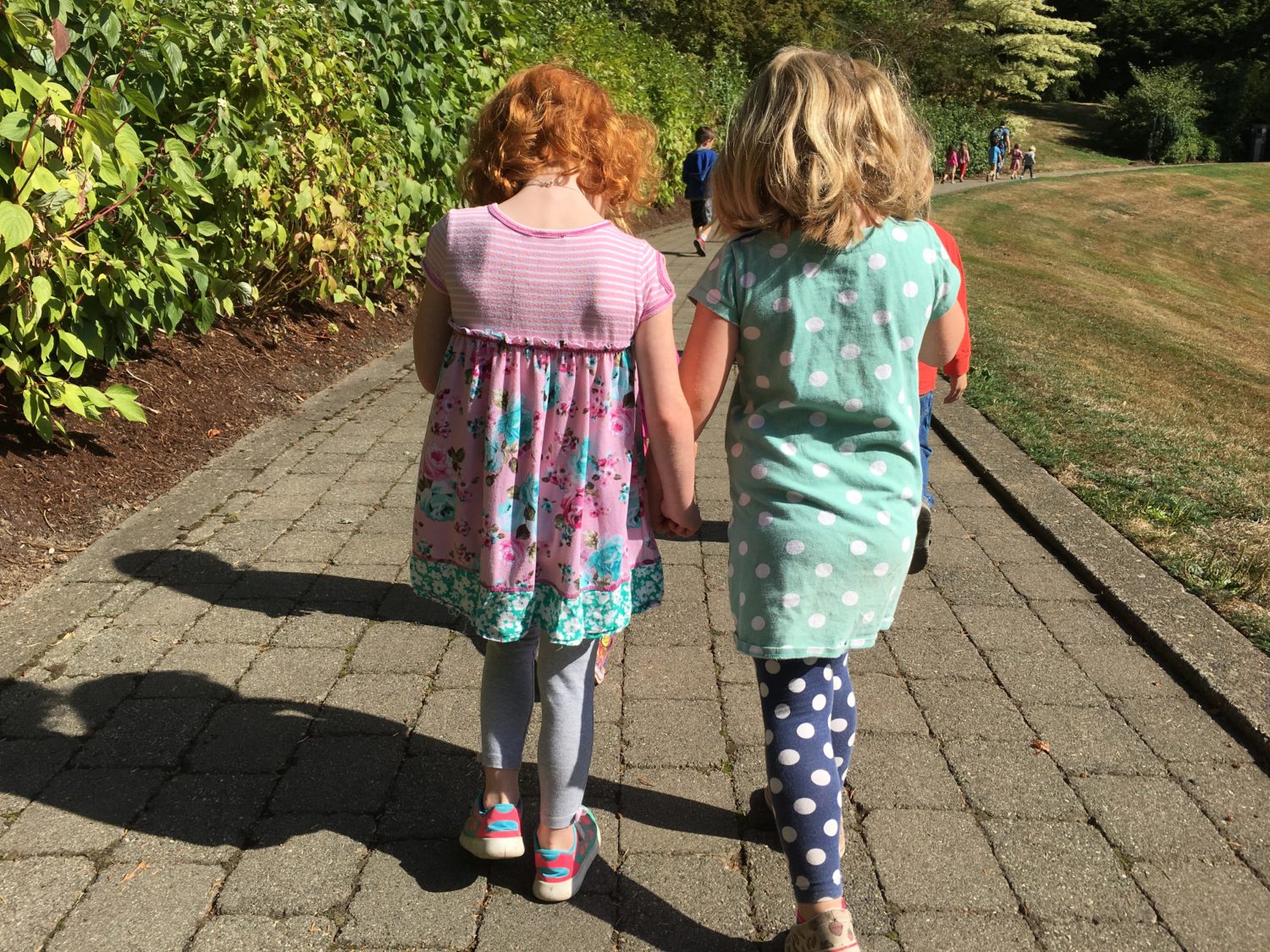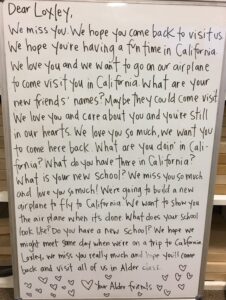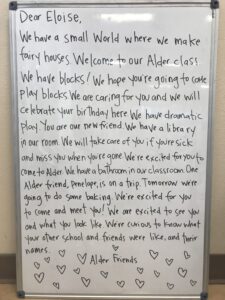Changing shape; continuing to grow

A deep sense of love and belonging is an irreducible need of all people. We are biologically, cognitively, physically, and spiritually wired to love, to be loved, and to belong.
How do young children demonstrate their deep sense of love and belonging? What are the many ways that they show us their capacity to consider another perspective, practice empathy, and communicate their value of each other?
Earlier this month, a three-year old friend moved out of state with her family. Now, every morning when the children sing the good morning song, they pause to sing good morning to their long-distance friend. They talk about her, remember her stories and wonder about her new life. How is it the same, and how is it different?
Yesterday, the children wrote her a letter and are eager to hear back from her. Even though she’s far away, their connection is still strong.

Alongside this departure of a beloved community member, the children are anticipating the arrival of a new friend after Winter Break. Beyond her name, they know so little about her – which drives their curiosity. What are her stories? What does she love? How does she feel about stepping into a new community?
When the teachers invited the children to write her a message, this was their response:

These two letters remind us, once more, that we’re born hard-wired for connection. When the children finished the first letter, they asked the teacher to make 20 hearts – one for each child. After writing the second letter, one child spoke up and urged the teacher to add 21 hearts this time. One for each child, including their old and their new friend. This is evidence of their big image of community: it doesn’t shrink; it may change shape, but it continues to grow. And even when someone leaves, they are still a vital part of us.
